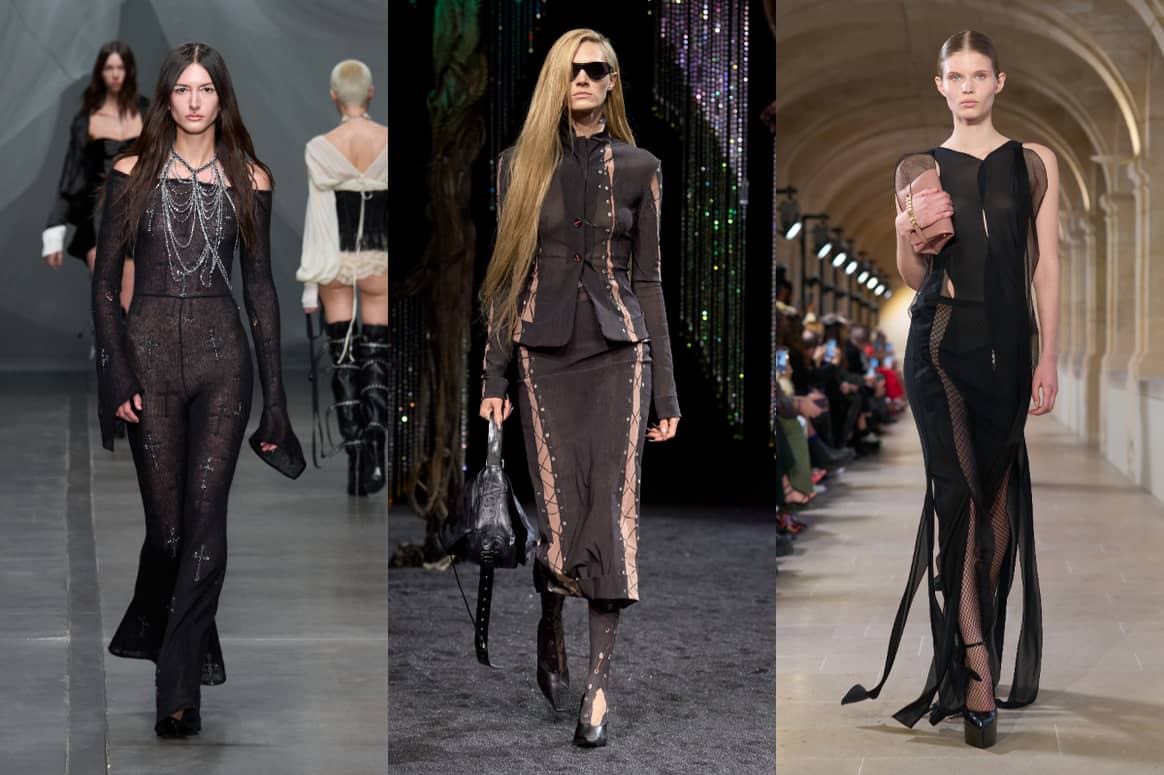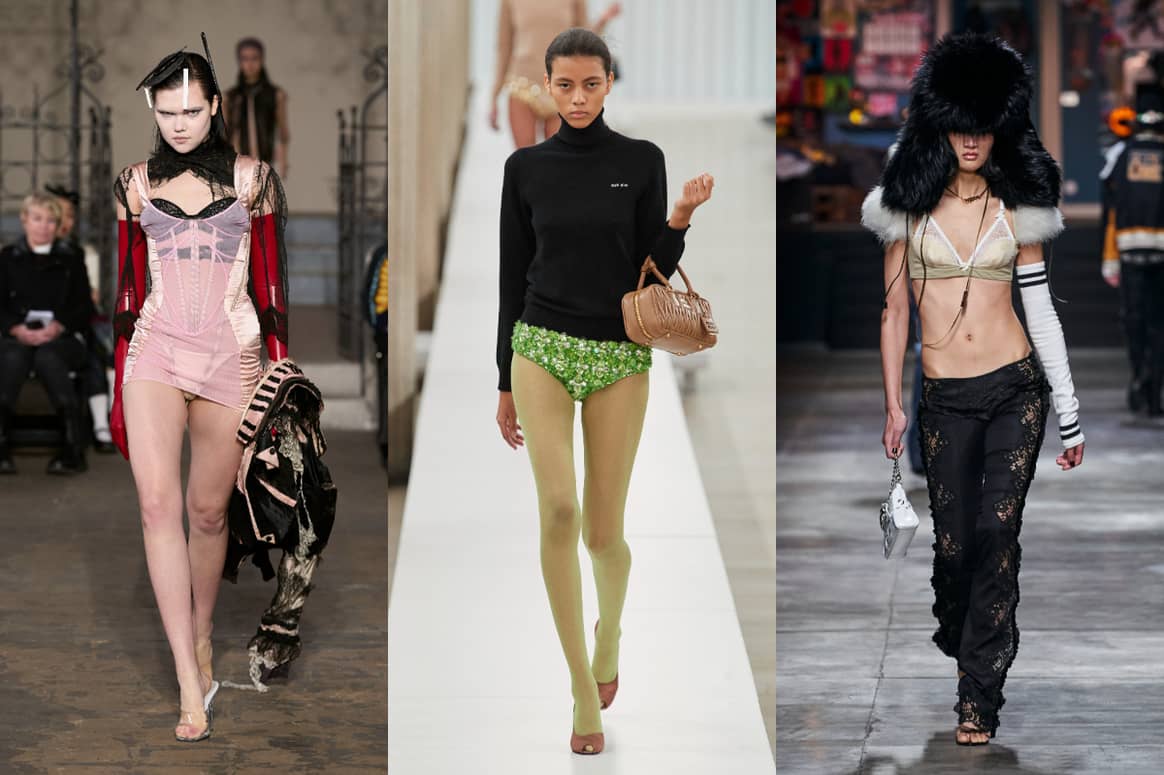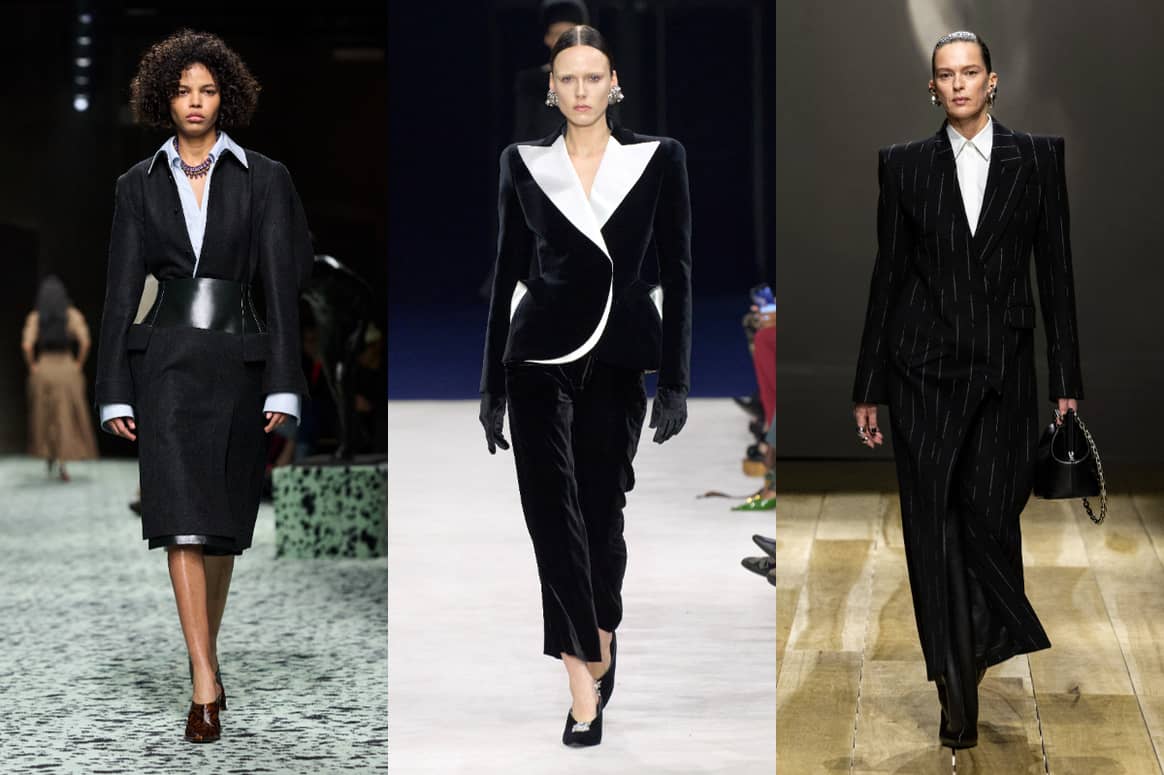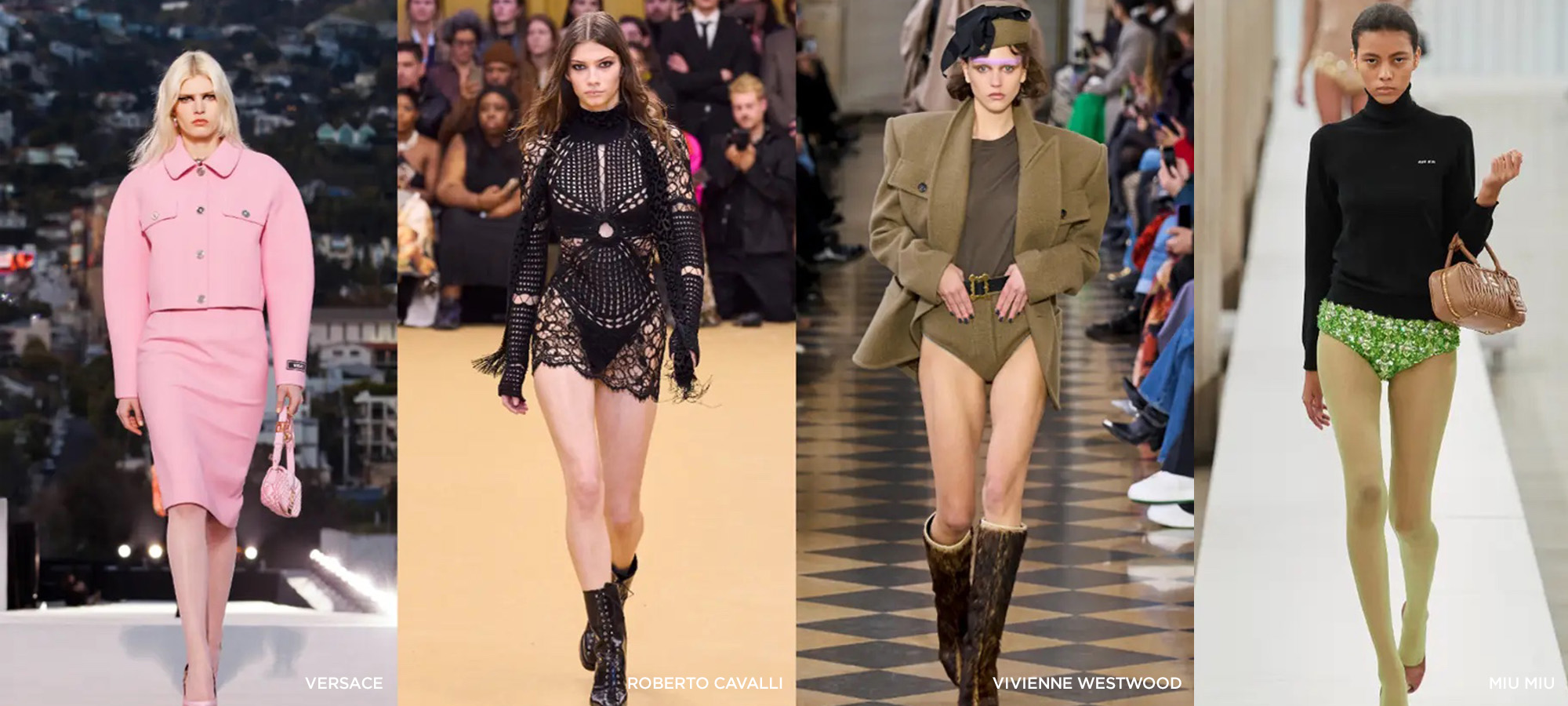Preview of the SS24 women's fashion trend: The evolution of feminism in the fashion world
Rebellion, intertwined with feminism, has always been a part of fashion and is often seen in the way designers convey their norms and values. Whether on the runway in the form of protests - think Karl Lagerfeld's SS15 Chanel show - or statements in the clothing itself - such as the many printed T-shirts in the FW17 collections in response to Donald Trump's election campaign.
As time progresses and history repeats itself, feminism in the industry has naturally grown as designers explore new ways to depict female empowerment. This resulted in a stark contrast in approaches within the FW23 collections, with some lines referencing past feminist features like the Power Suit, while others utilized the power of lingerie as a celebration of the female form.
In a conversation with FashionUnited about these emerging trends, Patricia Maeda, Director of Women's Fashion at Fashion Snoops, said, "With social media providing real-time access to the latest products and micro-trends emerging every second, today's fashion trends are much broader (and faster) than ever before. I think there is room for all different themes to coexist, but what has become clear is that the top layer of creative directors nowadays has a strong sense of who their customer is and what they shop for, thus delivering on-brand pieces that can ultimately take on different aesthetics."
Witches take charge

(From left) FW23 collections by Aniye Records, Acne Studios, and Victoria Beckham. Image: Launchmetrics Spotlight
Last year, the conversation about the connection between witchcraft and feminism took on new forms as witches gained higher status and became the ultimate "modern feminists." This shift was fueled by a series of new films and publications on the subject and eventually seeped into the fashion world, with an initial impact on the SS23 collections, such as Versace's lace-laden black widows. The gothic approach continued into FW23, with collections like Aniye Records and Acne Studios showcasing equally provocative looks, often adorned with symbols like crosses or flames. This trend was largely driven by former dominatrix and ex-partner of Kanye West, Julia Fox, who has become a kind of "poster child" for this deviation toward the dark side.
And it seems that we can expect more of the occult in the upcoming season, as predicted by trend researcher at the Deutsches Mode-Institut, Carl Tillessen. During a presentation on trends for the SS24 season, Tillessen noted a shift in designers' muses, stating that they were "sending not only angels but also fallen angels down the runway." He added that people could once again acknowledge their moral ambivalences, saying, "It's about uncensored and uninhibited sex for the advanced."
Lingerie becomes a significant part of outerwear

(From left) FW23 collections by Dilara Fındıkoğlu, Miu Miu, and Dsquared2. Image: Launchmetrics Spotlight
While the role of lingerie in the everyday wardrobe is not new, its increasing use in runway collections signifies a shift in how such garments are viewed in the fashion world. In the eyes of designers, showcasing skin or drawing inspiration from underwear is actually a form of body pride and highlighting the female figure, with recent iterations also countering the millennial hype that has dominated the industry in recent years. One of the champions of this trend is Nensi Dojaka, winner of the 2021 LVMH Prize, whose lingerie-like prêt-à-porter has earned her acclaimed status. In an interview with WWD, Dojaka stated that showcasing the body "started more as a trend, continued, and is now becoming a statement of empowerment, making the female body 'acceptable' rather than being afraid [to be seen] or sexualized."
Compared to other forms of feminism on the runway, the lingerie trend presents a softer view of the concept, often defined by pastel colors and lightweight materials such as chiffon or lace. Maeda from Fashion Snoops said, "The shift towards more feminine and softer themes shows the growing desire to move away from the rigidity of patriarchal structures and embrace a softer approach to fashion. In the current social landscape, where women's freedom of choice is limited and punished, claiming femininity becomes an important act of emancipation. In this cultural landscape, clothing can reveal important layers of the experience of female identity, from empowering bodily expressions through sheer layering to reclaiming sexualized items by showcasing lingerie."
Power Suits keren return with subtlety

Want to read more inspirational trends? Click on the link below to read the full article at FashionUnited.
FashionUnited.nl/DamesmodeTrend2024
Geschreven door: Rachel Douglass, FashionUnited
Share article
